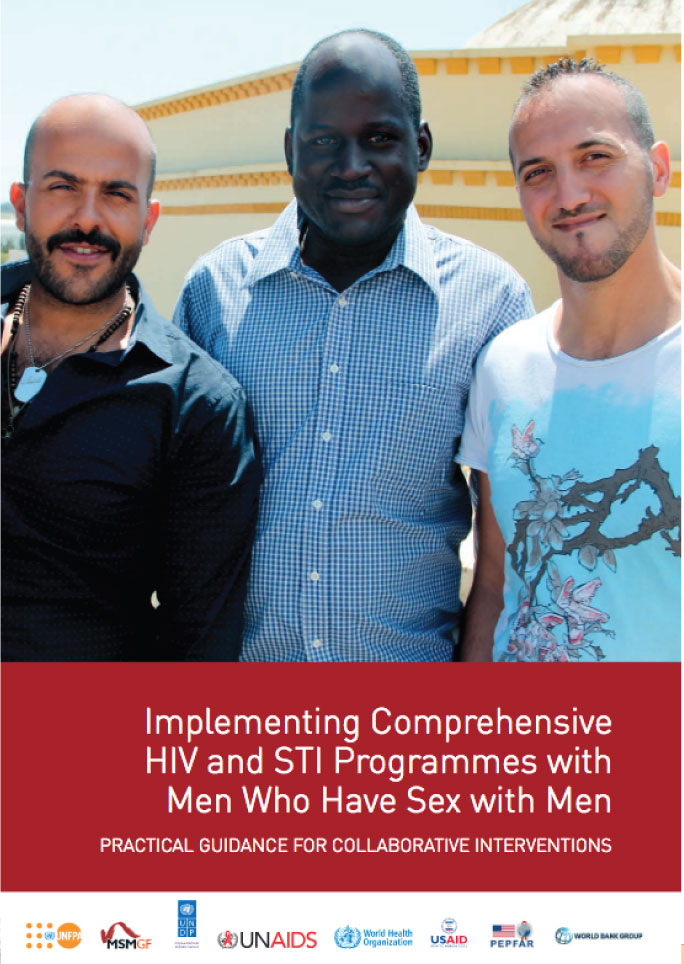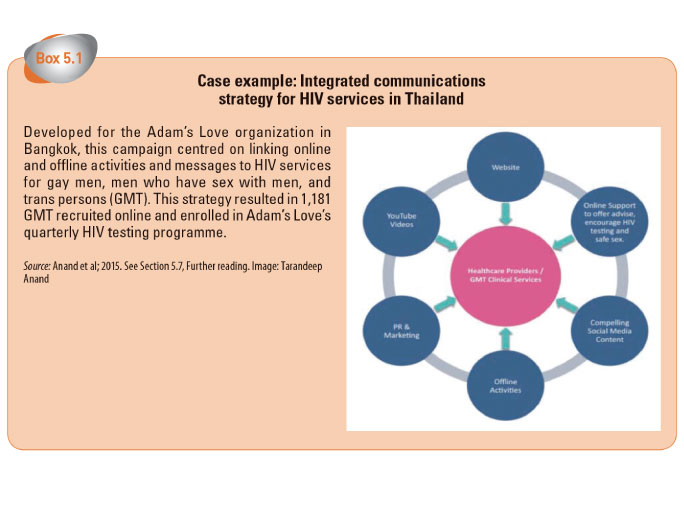|
|
Case Study: PRACTICAL GUIDANCE FOR COLLABORATIVE INTERVENTIONS Implementing Comprehensive HIV and STI Programmes with Men Who Have Sex with Men PRACTICAL GUIDANCE FOR COLLABORATIVE INTERVENTIONS Recommended citation: United Nations Population Fund, Global Forum on MSM & HIV, United Nations Development Programme, World Health Organization, United States Agency for International Development, World Bank. Implementing comprehensive HIV and STI programmes with men who have sex with men: practical guidance for collaborative interventions. New York (NY): United Nations Population Fund; 2015.  Case example: Integrated communications strategy for HIV services in Thailand Developed for the Adam’s Love organization in Bangkok, this campaign centred on linking online and offline activities and messages to HIV services for gay men, men who have sex with men, and trans persons (GMT). This strategy resulted in 1,181 GMT recruited online and enrolled in Adam’s Love’s quarterly HIV testing programme. Source: Anand et al; 2015. See Section 5.7, Further reading. Image: Tarandeep Anand Using Information and Communication Technology 5.2.3 Designing a behavioural intervention for ICT After considering the best ICT approach for the programme in question, and mapping the ICT landscape for the community you are trying to reach, the specific programme can be designed in detail. The content and approach of each intervention will vary depending on the purpose of the intervention and the platform used to deliver it, e.g. a website, Facebook page or other social media app. The following are general components of the process that are applicable to many ICT platforms and interventions: 1. Begin by referring to established theories of behaviour change as a basis for the intervention. 2. Consider how different ICT components can contribute collectively to the overall goal of the intervention (see Box 5.1). 3. Tailor the message to the channel: Each platform (e.g. Facebook, Twitter, Whatsapp) has its own unique way of displaying and conveying information, and its users will consume the content in different ways. Choose the theme, then the channel(s) and design the presentation of the message from there. 4. Take a creative approach: Having adopted a theory of behaviour change, be prepared to “think outside the box” as you apply it to ICT. You must entice people to click on your website or open your message. 5. Know your story, know your voice. Determine the voice for the intervention and be consistent. Every post should be composed with engagement in mind. Read aloud the content before posting. Does it sound conversational? Is the content written in a way that men who have sex with men will respond to? Does it address their needs and concerns? 6. Be provocative: Many ICT platforms, especially messaging and dating/hook-up apps, are informal. Most users are not shocked by content that uses colloquial language or is sexually explicit; this may be precisely what gets your message noticed. However, programme implementers should be mindful of any local laws regulating explicit and/or obscene content. 7. Be authentic and realistic: Shortcuts such as copying and pasting text from other sources and other automated ways of creating content may look and sound fake. Always consider whether material or approaches taken from another source should be adapted to the local context. Avoid lectures, and use language that acknowledges and supports the desire of men to have sex with other men. 8. Keep the user’s needs in mind: User-driven content (i.e. content that as much as possible reflects the user’s perspective, experiences and means of expressing himself) is likely to have the greatest appeal, encouraging the audience to communicate in their own language, slang and voice. 9. Use pre-testing and iterative development: Use the same audience to test each iteration of your content, to ensure that responses are comparable when using static platforms like SMS. Do not test the programme on staff or the principal beneficiaries of your organization (i.e. those who are already well connected with the services you are trying to promote). Never assume you know in advance what the results will be. Active platforms, like social media, can use iterative development, changing the content and messages depending on audience reaction. 10. Continuously track and monitor results and adjust the ICT intervention based on new information |















